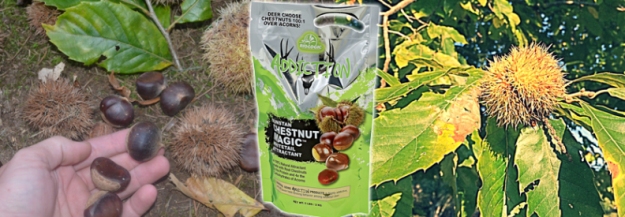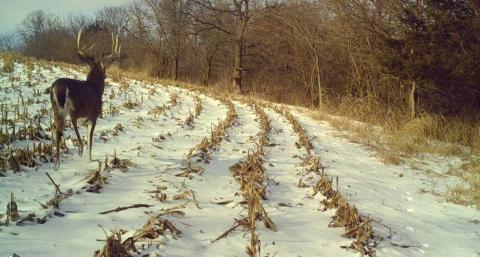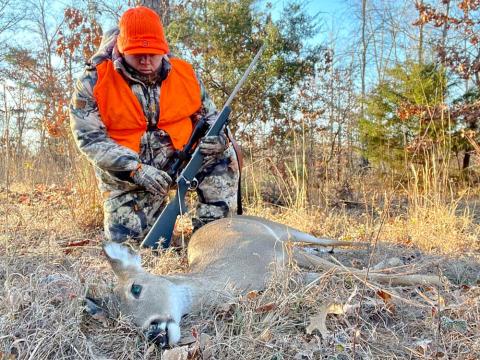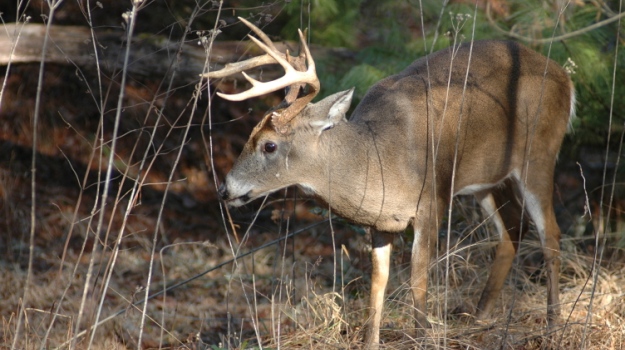
Editor’s Note: Dennis Garrett of Harlan, Kentucky, in the southeastern corner of the state, lives in the Appalachian Mountains and says, “I've worn Mossy Oak from the first time I started hunting. I've been deer hunting since 1998, but my dad took me squirrel hunting with him when I was too small to carry a gun. I like the Mossy Oak Treestand pattern. When the leaves are off the trees in our section of the country, our trees look gray, and then I’ll resemble a part of the tree. During the early hunting season, I like Mossy Oak Infinity.”
In our part of southeastern Kentucky, any buck that you can take with a bow is a good buck, but I’ve found a 170-class buck that I've been watching for 3 years. I've decided I won’t put out trail cameras and won’t go near where he lives until the rut. Since a neighbor saw the buck before the 2014 season, I know he survived last deer season. This year, I've decided to wait on the perfect day when the wind and weather are right, and the rut is on to try and take this buck. I've taken a few small 8-pointers and a few small 6-pointers with my bow.
If most people who come in our archery shop at Mountain Outdoors in Baxter, Kentucky, take any old mature does with their bows, they're as proud of those does as if they are monster bucks. The reason is that most bowhunters in our area of Kentucky will go 5 or 6 years before they even take deer with their bows. Because our land has been strip mined and reclaimed, we don’t have hardly any agriculture or good deer habitat or deer food to produce numbers of deer here. We’re not like some of southern states where a hunter may see 5 to 20 deer in a day of hunting. Many of our hunters won’t see a deer during the entire hunting season. Most of the bigger bucks are being taken off private, well-managed lands.
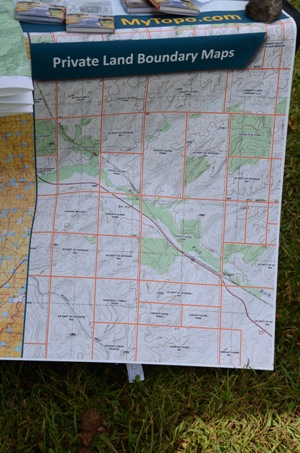 Another system that’s working to take big bucks in our section of the state is finding 100 acres of land that you can hunt or lease and planting Mossy Oak BioLogic green fields. Then those areas will draw in big bucks. But on our public lands, taking a mature buck with a bow is a very-difficult task. Even during gun/deer season, I’ll be sitting in a tree stand with my bow in my hand.
Another system that’s working to take big bucks in our section of the state is finding 100 acres of land that you can hunt or lease and planting Mossy Oak BioLogic green fields. Then those areas will draw in big bucks. But on our public lands, taking a mature buck with a bow is a very-difficult task. Even during gun/deer season, I’ll be sitting in a tree stand with my bow in my hand.
We can legally bait for deer in this part of Kentucky, but I don’t. Here’s why. If you put corn out under your tree stand one night and return the next morning, you may find five bears standing under your tree stand. When you're going to your stand in the dark morning, there's not really anything good about having five bears waiting on you there. So, I just don’t bait. I've been talking to the wildlife officers in our area. They said they’ve had more nuisance bear complaints this year than they’ve ever had before.
Our archery season runs from early September until mid-January. On the 59 acres of private land that I hunt really hard, I’ve only gotten one trail camera picture of one bear in 3 years. I put out Mossy Oak BioRock, which bucks seem to like. The bears don’t seem to come in to the BioRock like they do corn. During most seasons, when I'm out hunting, I’ll usually spot at least 12 bears, but I may see those same 12 bears several times during the year. I know they're the same bears, because some will have on collars, some will have tags in their ears, and some will be females with cubs.
I try to stay away from the areas I know have large elk populations. The elk are more of grazing type animals that prefer to stay on the flat top mountains and graze on the grass there. They’ll come down in the valleys occasionally. But most of the time, they won’t be in the same area where I hunt deer. I may see two elk per year when I’m hunting deer. If some friends and I are man-driving a clear-cut late in the season, I may see 40 or 50 elk in a day.
Dennis Garrett Says Kentucky Has It All – Whitetails, Elk and Bear
Dennis Garrett Explains That When Bear Move in the Deer Move Out
















